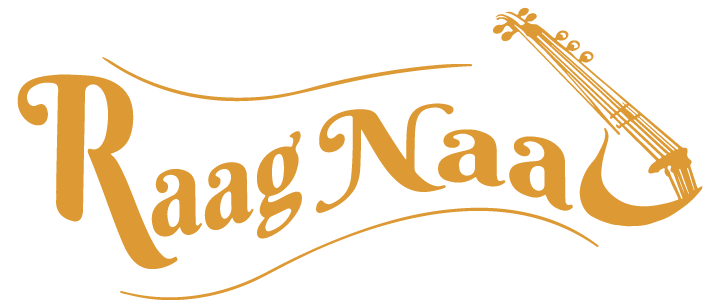Patron of music
ਰਾਗੁ ਨਾਦੁ ਸਭੁ ਸਚੁ ਹੈ ਕੀਮਤਿ ਕਹੀ ਨ ਜਾਇ ॥
raag naad sabh sach hai keemat kahee na jaa-ay. The melodies through which one is able to imbibe the Guru’s word are all true. One cannot estimate their true worth
ਰਾਗੈ ਨਾਦੈ ਬਾਹਰਾ ਇਨੀ ਹੁਕਮੁ ਨ ਬੂਝਿਆ ਜਾਇ ॥
raagai naadai baahraa inee hukam na boojhi-aa jaa-ay. The Lord is beyond melodies and airs… However it is only through music that one can understand His will
The above quotes by Guru Ram Das Ji, the fourth Sikh Satguru (True Master) describe the very essence of the life and time of His Holiness Satguru Jagjit Singh Ji‟s, the fifteenth Supreme Spiritual Master of the Namdhari Sikhs. Music pervaded all His actions and a moment spent in His august presence would be pure bliss. It was as if music had descended upon earth in a human form to invigorate and motivate us, to show us the path that leads to the Supreme Lord.
Inheritor of this beautiful legacy of the Sikh Gurus and Seers – Satguru Jagjit Singh Ji was born into the Guru family of Satguru Pratap Singh Ji and Mata Bhupinder Kaur on the 22nd of November 1920 at Sri Bhaini Sahib, under the colonial British rule. Satguru Ram Singh Ji, the twelfth Master of the Namdhari Sikhs and the architect of the Kooka Movement was His granduncle and the thirteenth Master Satguru Hari Singh Ji, His grandfather.
During the times of Satguru Ram Singh Ji, Sikh devotional music had become a medium of propagation in India‟s struggle for independence from the British during the first non-violent, non-cooperation movement. Fearing the outbreak of a national rebellion the British in January 1872 resorted to quelling the Kooka Movement by not only blowing up 66 Kookas at Malerkotla, but also deporting Satguru Ram Singh Ji and declaring Sri Bhaini Sahib a prison.
However despite the trying times the musical journey attained ascendancy under the benevolence of Satguru Hari Singh Ji and then Satguru Partap Singh Ji. The early 1900s saw renewed efforts to safeguard not only the traditions of Sikh devotional music but also those of the Indian Classical Music. Every morning during the ambrosial hours as well as in the evenings Sri Bhaini Sahib would reverberate with the eclectic sounds of Gurbani (devotional hymns) sung by Satguru Pratap Singh Ji and several pairs of hymn singers. A keen learner Satguru Ji imbibed this music while continuing to learn various languages, poetry, carpentry and gardening at the Gurmat Vidyalaya (school). Music was soon be added to the curriculum in 1928 with the arrival of Ustad Harnam Singh Ji from Chavinda at Sri Bhaini Sahib.
He was soon joined by the famed Rababi – Bhai Taba (Rebeck Singer / Player) of Amritsar, who would teach the students several traditional Gurbani (hymn) compositions of Dhrupad sung at the Guru‟s court at the Golden Temple. To teach the rhythmic cycles of the tabla Satguru Pratap Singh Ji invited Bhai Naseer, disciple of the famous Tabla Maestro of the Punjab Gharana – Mian Kadar Baksh to the Vidyalaya (school). The melodious sound of Dilruba was soon added to the growing repertoire of Sri Bhaini Sahib when Satguru Pratap Singh Ji along with the nine-year-old Satguru Jagjit Singh Ji together became disciples of Bhai Mastan Singh of Patiala.
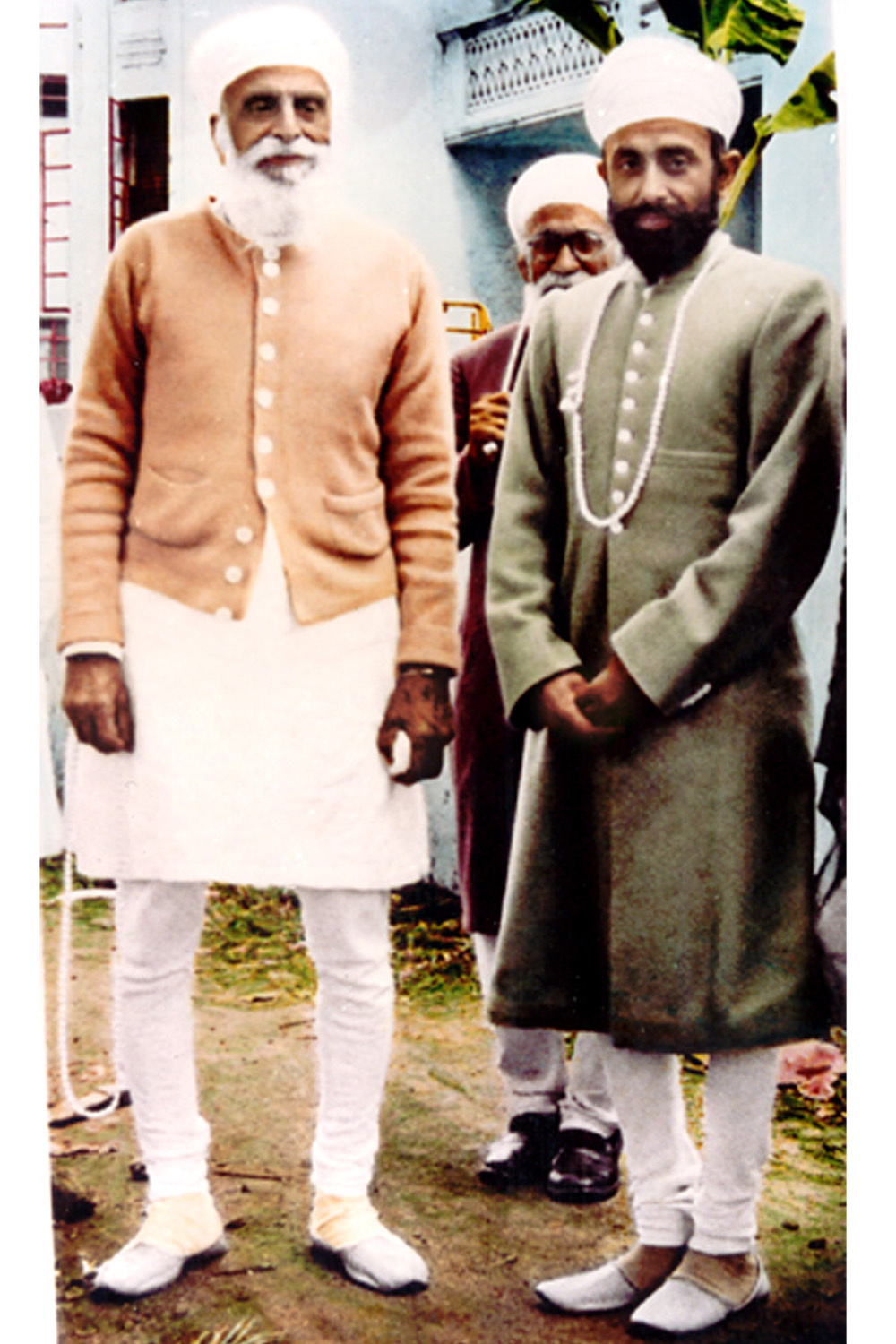
Sri Satguru Jagjit singh Ji’s Sangeet Ustads
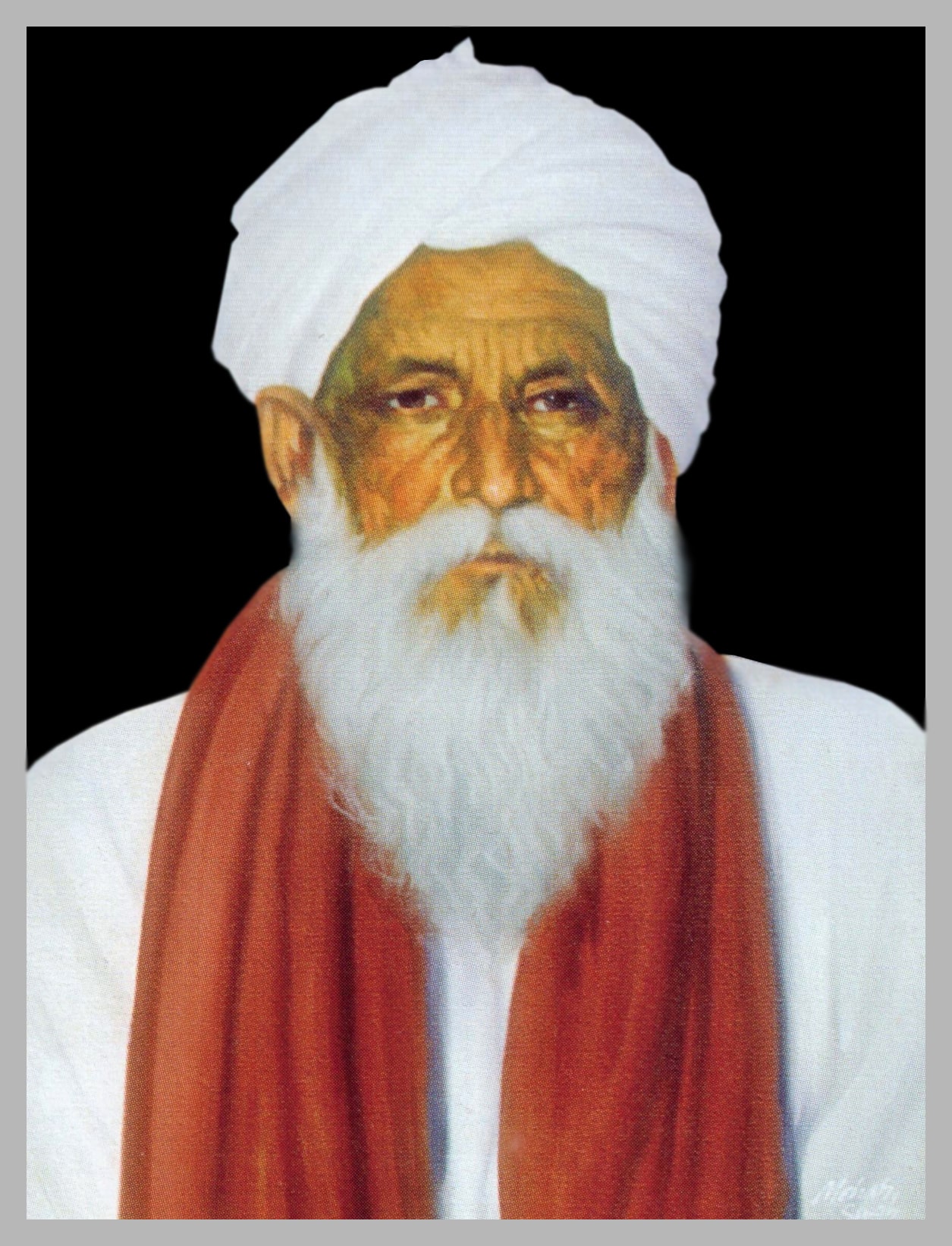
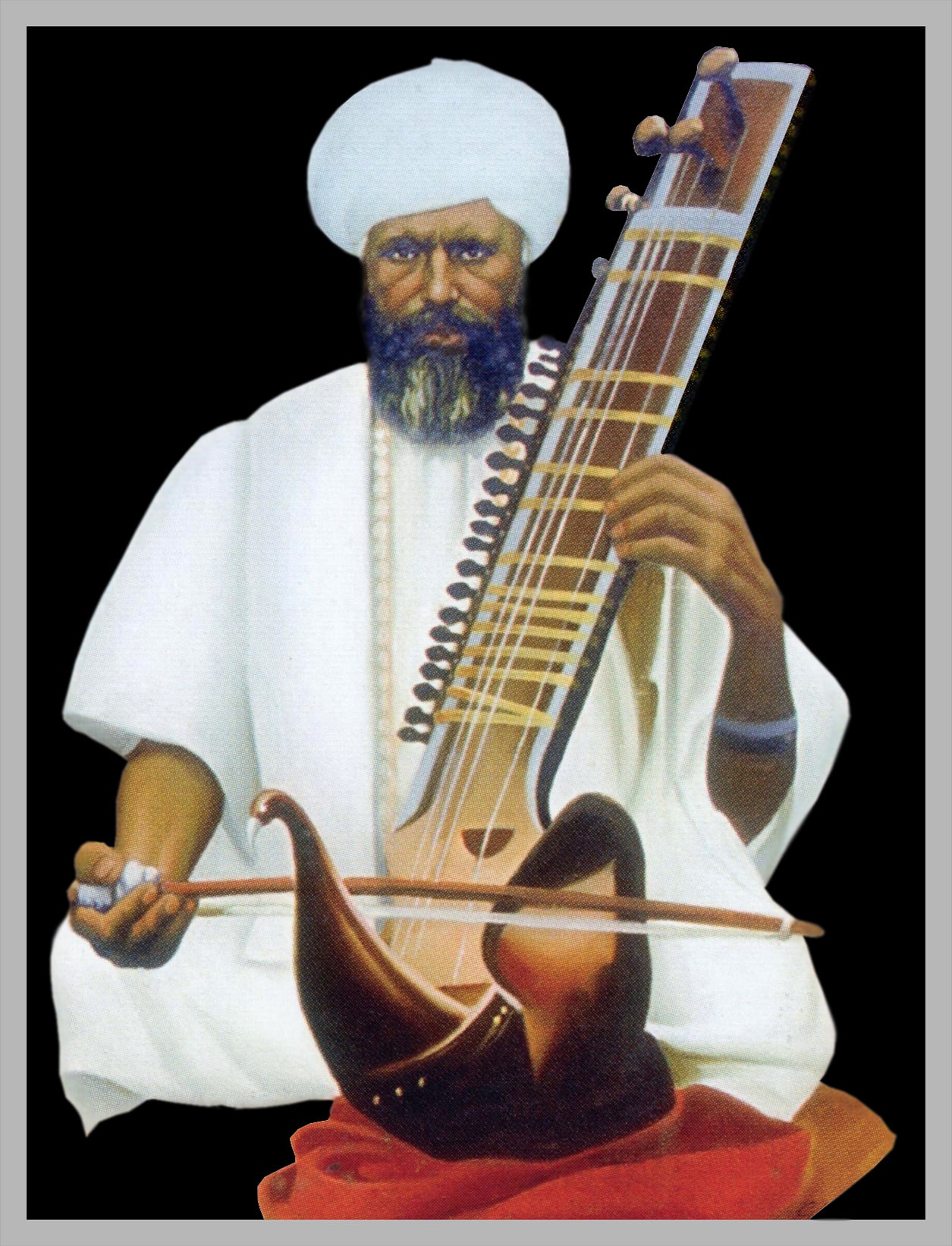
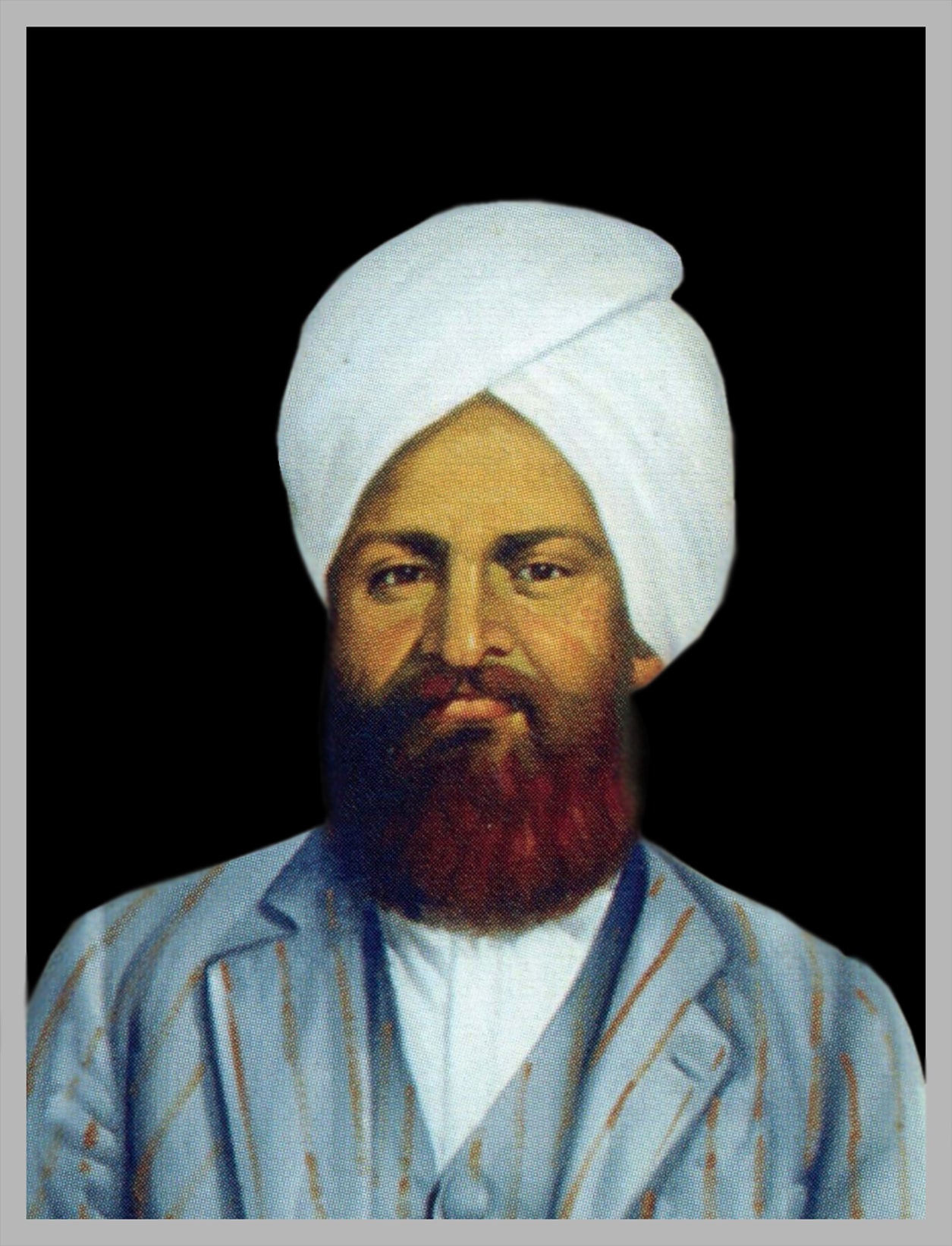
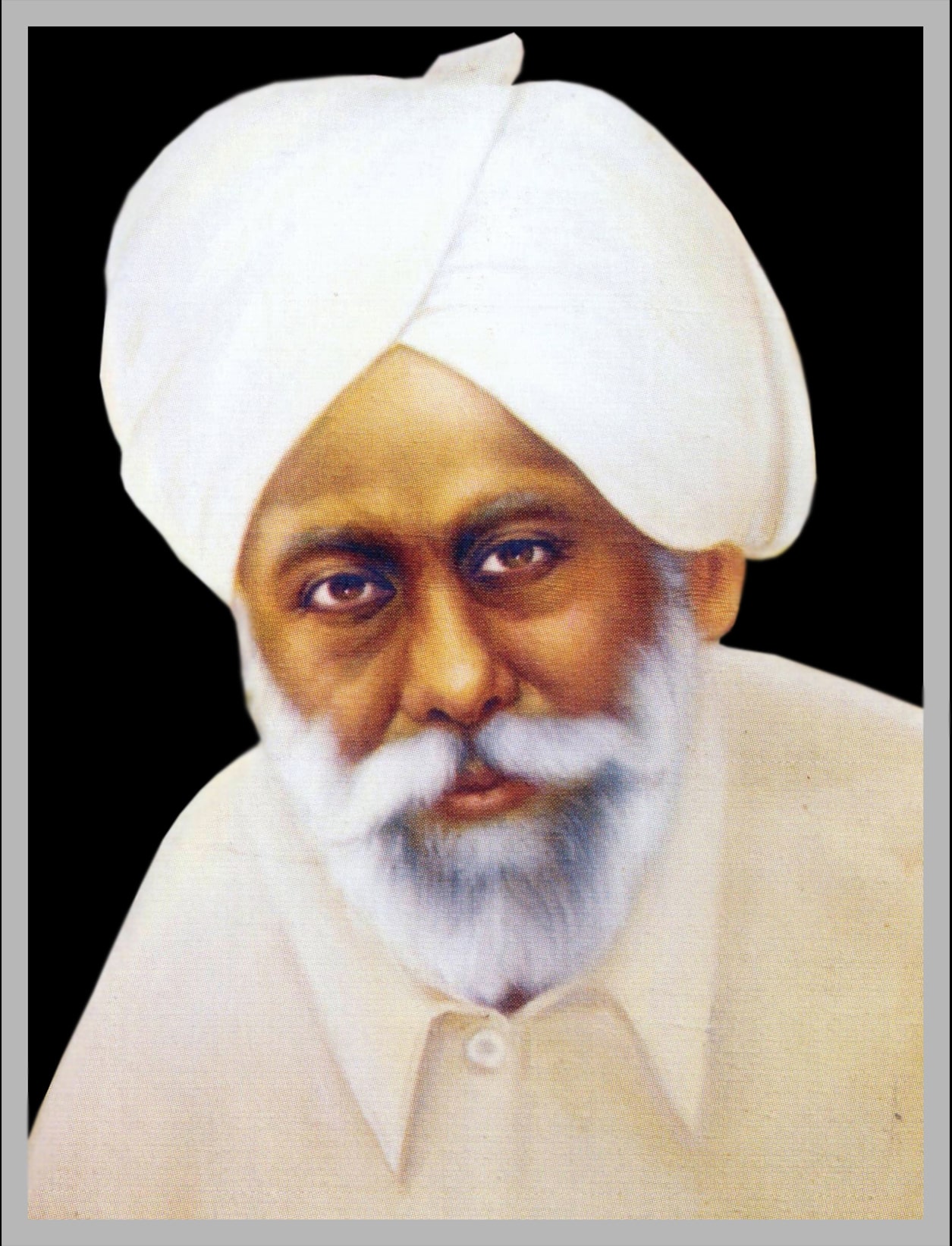
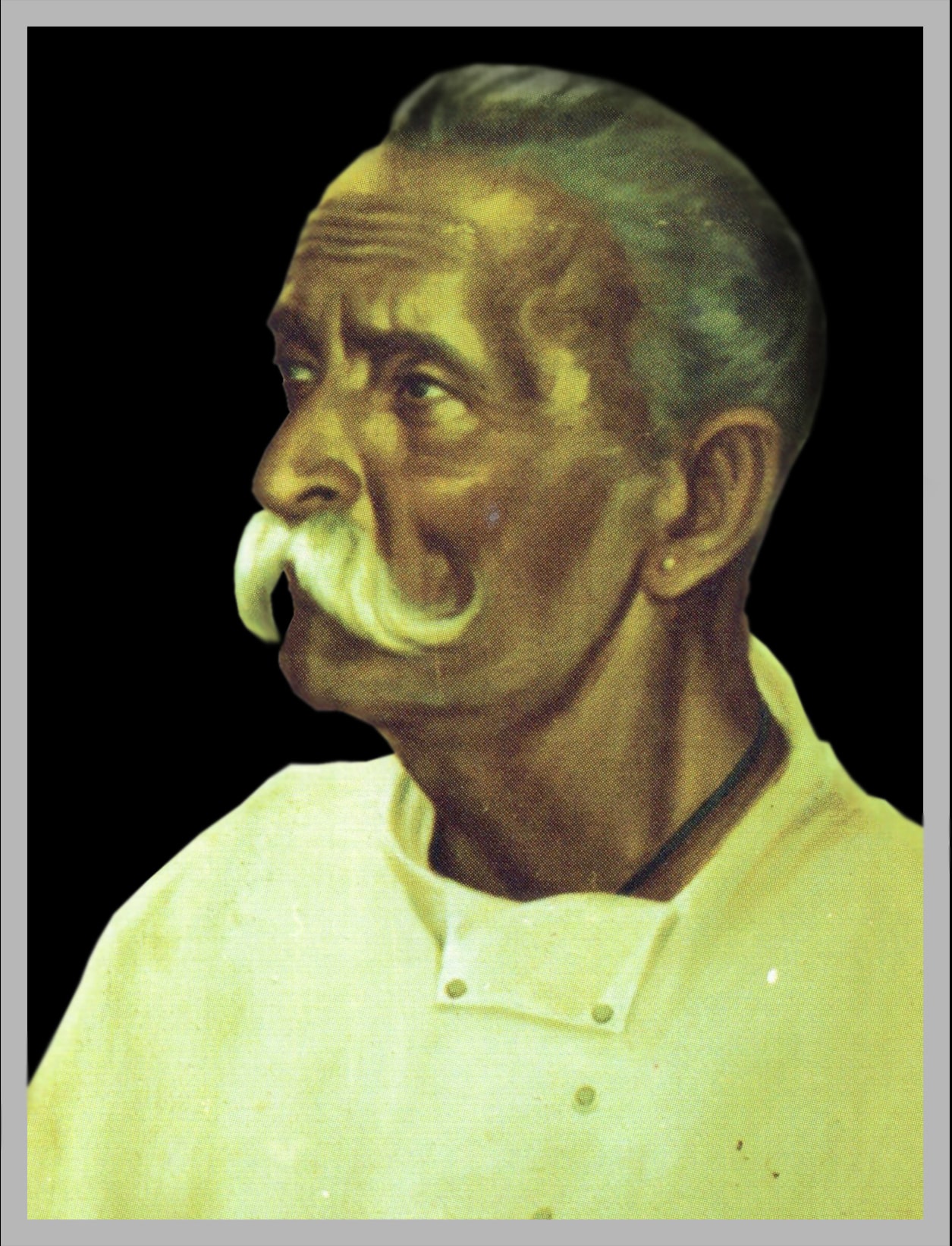
Indian classical music and Sikh devotional music share a unique relationship. The Aad Guru Granth Sahib, the collation of the teachings of the Sikh Satguru‟s, Muslim and Hindu holy men, Bards and hymn singers is metered and classified with various Indian Classical Ragas, it is an unequivocal literary and musical scripture that imbibes the grace and the tranquil of both the forms of music. The knowledge of Indian classical music is thus imperative. The Talwandi Gharana of Indian classical music had evolved as a Dhrupad school of singing where in the performance was considered as offering to the Lord. The compositions were an amalgamation of both Muslim and Hindu spiritual themes. The Gharana style had very fast concluding portions of the Alaap and several compositions had highly complex rhythmic variations. The singing of Gurbani in Dhrupad was known to invigorate and accentuate one‟s feeling of oneness with the Lord. To incorporate the same note worthy efforts were made to get Ustad Rahim Baksh, a well known practitioner of the Talwandi Gharana from Rampur village to come and teach students at Sri Bhaini Sahib. The experiment however didn‟t last long. As providence would have it, Ustad Rahim Baksh‟s father Ustad Udo Khan contracted severe diarrhea and despite best efforts continued to lose health. Satguru Pratap Singh Ji with his benevolence had him brought to Sri Bhaini Sahib where he was treated successfully. Post his recovery Ustad Udo Khan continued to stay at Sri Bhaini Sahib and taught over three hundred Dhrupad compositions to the eager students. During the same period Satguru Ji also learnt to play the Tarab on the Dilruba (playing the Dilruba by plucking the strings and creating a sound similar to the Santoor) from Ustad Harnam Singh Ji.
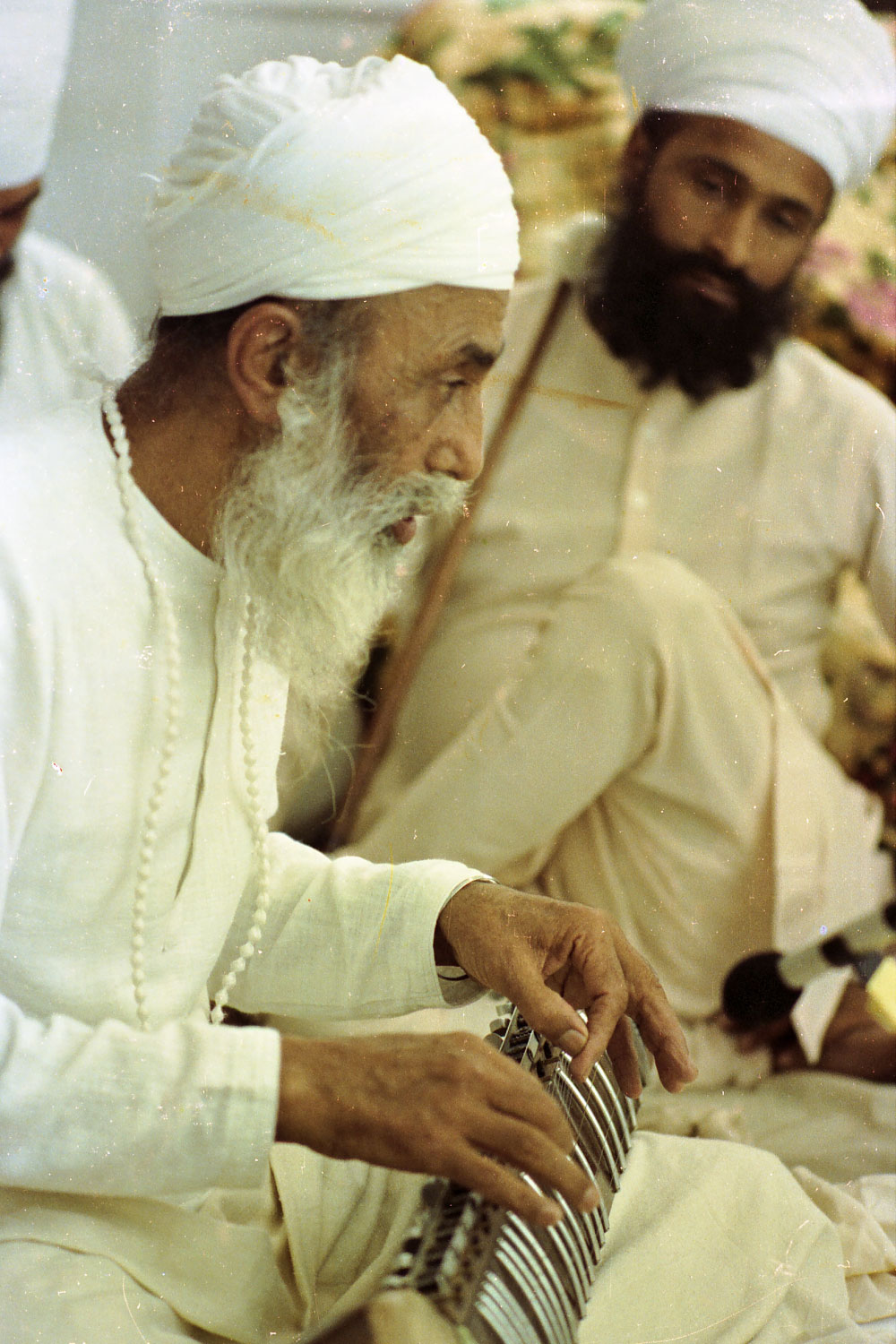
The already packed day would also be spent learning and reciting Gurbani unerringly by heart, listening ardently to the tales and folklores of the Sikh Gurus, imbibing not only their spiritual values and tenets but also developing a deep knowledge and keen understanding of the cultural ethos of Punjab as well as India. Satguru Ji‟s incessant ardor for sports, rearing horses and tending to the cattle would soon lead to Satguru Ji being known as ‘Beant Ji – the One with no limits’.
With the advent of the fourties, political strife engulfed the world and India. Post World War II when the British realized that they could no longer continue to rule India, they decided to partition it on religious grounds. However Satguru Partap Singh Ji had already anticipated it. During partition Satguru Ji himself along with his elder son Satguru Jagjit Singh Ji saved several people caught in the cross fire of communal riots in Pakistan and brought them safely across the border to India. Adhering to the basic principle of Sikhism – “Welfare of All”, hordes of Muslim caravans traveling from India to Pakistan were served food and transferred across the border safely.
The communally charged environment also cast its dark shadow on the tradition of devotional as well as Indian classical music. The Golden Temple lost several of its Muslim Rebeck players and singers. The Talwandi as well as the Punjab Gharanas split leaving the very ethos of culture and civilization lost. Satguru Pratap Singh Ji‟s prudence and fore sight in grooming Satguru Jagjit Singh Ji stood Him in good stead when upon being entrusted with the rehabilitation of the community reeling from the impact of partition, Satguru Jagjit Singh Ji would tirelessly work with the refugees and become the pivot around the development of the Sirsa region (where most of the Namdhari refugees settled). It is a tribute and unequivocal praise to Satguru Jagjit Singh Ji‟s efforts that the cultivation of land of almost 20 villages was shared. The sowing, tilling and harvesting of the same becoming a role model of Unity in itself, showing the world what good faith and trust could do.
It was thus that Sri Satguru Jagjit Singh Ji spent the first 39 years of his life as a Guru Sikh, following the path of his father, Sri Satguru Partap Singh Ji, arduously, never once questioning, through pain and effort, never even once letting anyone feel that he was the son of the Guru, thus earning even the praise of his father, Sri Satguru Partap Singh Ji, who once in a moment of emotion said to him “Son, you are not only my son but my friend too”.
It was as if destiny beckoned and the magnificent sun set, on the night of 21st – 22nd August 1959 AD, Satguru Partap Singh Ji passed away at Sri Bhaini Sahib. Adhering to the wishes of his father and honoring the trust placed in him, Satguru Ji assumed his place as His Holiness Sri Satguru Jagjit Singh Ji. It would be from this very epicenter that history would witness the growth and progress of the Namdharis and the fulfillment of the dreams of Sri Satguru Partap Singh Ji.
The dawn of the sixties saw the emergence of an ambitious new generation. Industrialization and international trade were blurring geographical boundaries. Western music and pop culture entered mainstream India. The waning popularity of traditional Sikh devotional and Indian Classical Music demanded a new approach. Satguru Ji with his gift for spotting talent started to connect with the younger generation. With his magnetic personality and aura Satguru Ji was able to draw and motivate Namdhari youth from across the world, channelizing their energies towards their personal as well as the overall betterment of the community. The foundation for the Namdhari Vidyak Jathas both for the Men and Women (The Young Men and Women Associations of Namdhari Youth) was laid in 1965. Youth from all walks of life were counseled and an effort was made to create a spiritually strong, culturally vibrant and economical resilient community. The goal was to create illustrious community members who would go onto lead the community in all spheres, whether it be Agriculture, Music, Business, Politics, Sports etc
On the musical front, following in the footsteps of His father Satguru Pratap Singh Ji, Satguru Ji appointed his younger brother Maharaj Bir Singh Ji (a maestro of the Pakhawaj in his own right) along with another classmate from the Gurmat Vidyalaya – Seth Chandrahas and Pt Mahadev Pershad ‘Kathak’ from Amritsar along with his son K Mahaveer to teach students music at Jivan Nagar, Sirsa. Despite a grueling travel schedule Satguru Ji would make it a point to conduct and participate in Music sittings every evening whenever He was in town. This would go on to become a habitual thing all His life. While the style of singing continued to be Dhrupad, Satguru Ji was keen to explore new forms and started to push the envelope when in the late sixties he added the Tihai to His singing and playing. (Three equal repetitions of a rhythmic pattern or rhythmo-melodic pattern, interspersed with two (usually) equal rests). In times to come this would also become a trademark in Satguru Ji‟s singing as well as instrumentation.
Satguru Ji with His far sightedness not only sought out students but Maestros as well, who would then teach His students. An incident in reference, which has the trademark of Satguru Ji written all over it is when in 1966 Satguru Ji sought out Sarod maestro Ustad Amjad Ali Khan. The late evening music sitting ended in a lifelong association, the sound of the Sarod would soon be beaded into Satguru Ji‟s music and students would proliferate the art within the Namdhari community.
“His Holiness Satguru Jagjit Singh Ji Maharajhas always been a source of great inspiration to many classical musicians of India, He would be at ease singing in very complicated raagas and talas”
~Ustad Amjad Ali Khan (Sarod Maestro)
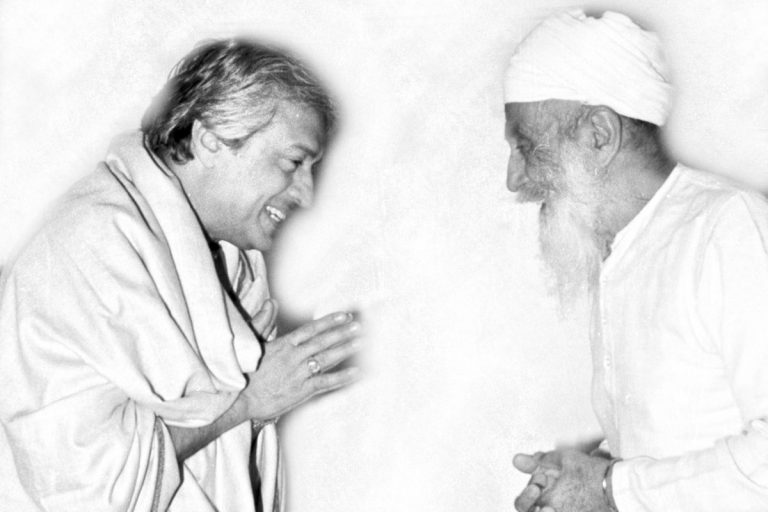
The seventies saw the advent of the Satguru Pratap Singh Ji Memorial Concerts and with it several music maestros were drawn towards the eclectic personality of Satguru Ji. Ustad Bismillah Khan, Ustad Allarakha Khan, Ustad Vilayat Khan, Pt Jasraj, Pt Ram Narayan, Pt Shiv Kumar Sharma, Pt Hari Prasad Chaurasia, Pt Shanta Prasad, Pt Kishan Maharaj, Pt Birju Maharaj and several others. The music concerts were forums not just for the maestros but a platform for the upcoming to not only showcase their talent but also gain Satguru Ji‟s blessings. A great patron of music, Satguru Ji‟s benevolence came to the fore when in 1973 post a performance at the Satguru Pratap Singh Music Concert, Satguru Ji sought out Pt. Rajan – Pt Sajan Mishra, and motivated them to take up Indian classical singing as their career, even offering them a stipend until they established themselves as artists of great repute. In the words of Ustad Amjad Ali Khan, Satguru Ji was perhaps the only one who thought about scholarships for maestros, teachers as well as students.
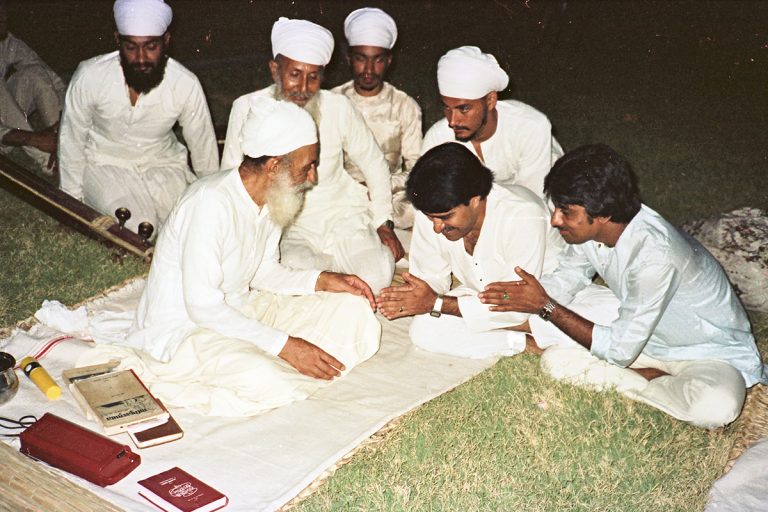
“All our achievements and happiness are due to Satguruji‟s kirpa”
~Pt. Rajan – Sajan Mishra (Vocal Maestro)
It was perhaps Satguru Ji‟s vision as well as this unique relationship with maestros that several Namdhari students started training under almost every maestro who came in touch with Satguru Ji. His benevolence was not limited to just the Namdharis, talented youth who expressed keen interest in learning music would not only be supported financially and otherwise but also sent to several maestros to train. Several maestros were invited to Sri Bhaini Sahib and music notes were exchanged with them during the special music baithak (sittings). Satguru Ji would Himself participate enthusiastically. The music sittings would also serve as an opportunity for the young students to showcase their talent to the maestros.
“Satguru ji’s congregations would feel like the courtroom of a King, where musicians from
all streams performed in perfect harmony creating an ethereal environment”
~Pt. Birju Maharaj(Kathak Maestro)
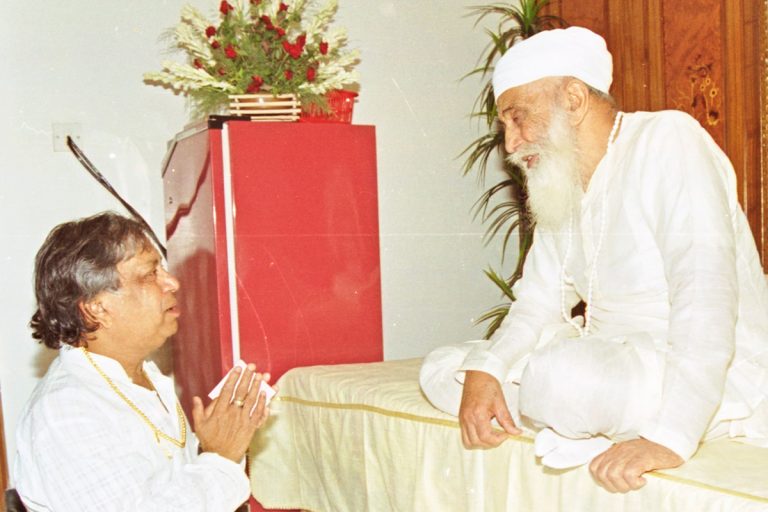
Whenever Satguru Ji sang Gurbani during the Asa-di-Vaar (morning prayers) in the ambrosial hours and Gurbani Kirtan during the late afternoon congregations it would be like music classes for the hymn singers as well as other participants. The sessions would be His canvas to compose new compositions in several Raagas as well as safeguard the ancient music of the Sikh Gurus. The tradition of Gurmat Kirtan witnessed the revival of its glorious past. The Dilruba replaced the harmonium; and traditional instruments like the Sitar, Sarod, Sarangi, Santoor, Taar Shehnai etc were added. Special impetus was paid to render and sing Gurbani in not only the composed Raaga but also with correct grammatical pronunciation of the same. A majority of the hymns composed were sourced from the Aad Guru Granth Sahib, however Satguru Ji would often compose and sing several compositions from the Dasam Granth as well – propagating the lyrical and poetic writings of Satguru Gobind Singh Ji. While the norm was to sing Dhrupad in Jhap Taal, Chaar Taal, Dhamaar, Pancham Savari etc Satguru Ji would compose and sing Dhrupad in nine, eleven, thirteen, seventeen, eighteen, nineteen and even twenty one beats. His use of tempos like 7¾, 10¾, 137/8, 14½, 14¾ etc., in various compositions would astound both the Maestros as well as students alike.
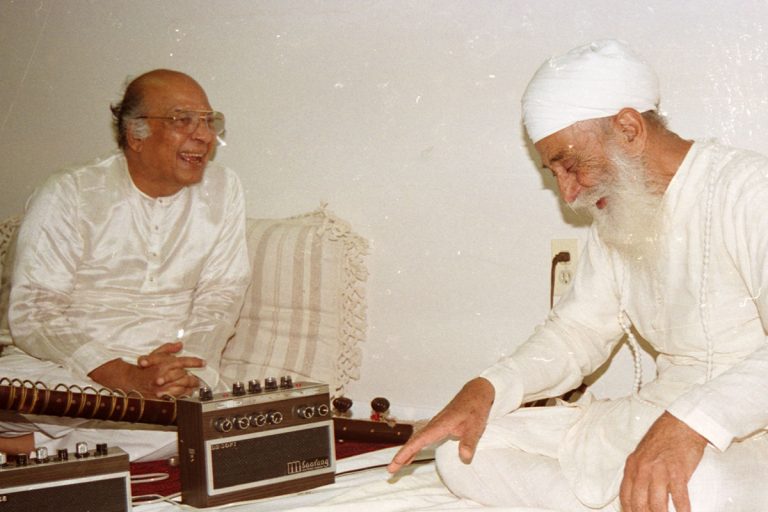
““Rhythm and Tempo reside in Satguru Ji’s viens”
~Ustad Vilayat Khan (Sitar Maestro)
Dilruba was his favorite instrument. Whenever Satguru Ji sang Gurbani and played the Dilruba, it was as if time would stop and one would attain a state of bliss; epitomizing both love and separation from the Lord. The rhythmic dance of the fingers playing the „Tarab’ on the Dilruba would remind one of the various notes that Mother Nature has bestowed upon us. The playful manipulation of the beats as if orchestrating the rhythmic movement of the Universe. Satguru Ji would enthrall the audience by playing ten even eleven beats in teen taal. His love for music would spill into the daily chores. Compositions were created and music flowed while traveling, in conversation, during a meeting, on the sports field and even during a meal – everywhere. Music was the Omni-present heartbeat that drew everyone close to Him.
A keen student of music Himself, Satguru Ji introduced the Khayal form of singing into Gurbani Kirtan during the eighties. Students were motivated to improvise and express emotion by adding taans and sargams into various Gurbani compositions.
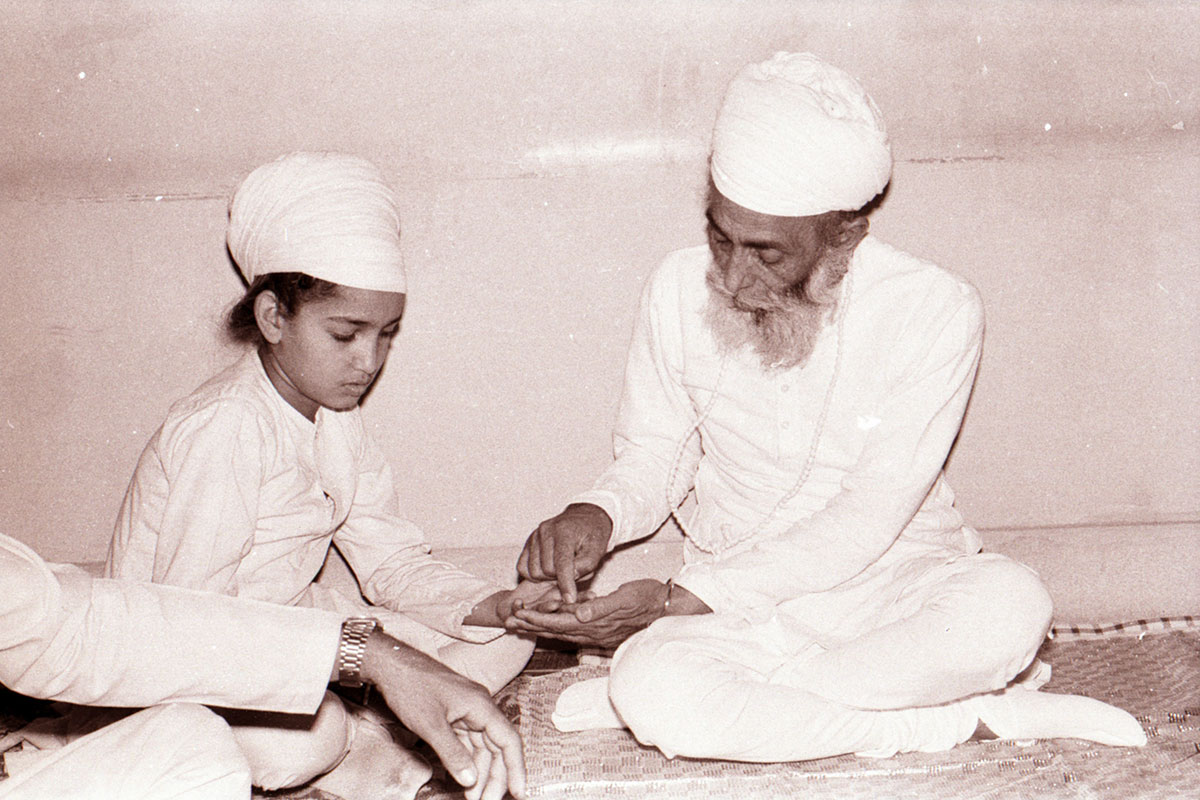
The flavor of the singing styles of various Gharanas under whom the students trained added yet another dimension to the music. While the focus had been primarily Gurbani Kirtan until then, the lack of students who knew the compositions from the Talwandi Gharana was a cause of concern. It was perhaps with this in mind that in 1982 Satguru Ji started teaching these compositions Himself to keen students. Successful students from the first batch of seventies were encouraged to take up teaching music at various Namdhari centers not only in India but also across the world including Thailand, UK, USA, Canada and Africa. Satguru Ji would continue to seek out young enthusiasts from across the world and initiate them personally into the world of music. Looking far ahead into the future Sri Satguru Ji prompted the training of girls from a very young age, encouraging and harnessing their talent. It was Satguru Ji‟s conviction that a mother who imbibed music would propagate the same within her children thus safeguarding the future of this great tradition.
His love and oneness with music would come to the fore once again when in July, 1992 Satguru Ji was diagnosed with a heart condition. Post a successful open-heart surgery in Australia Satguru Ji was advised rest. The forced musical hiatus did not dent His enthusiasm and He was often seen asking the Doctors as to when He could get back to singing. His joy knew no bounds when in mid October the restrictions were removed. The very same day Satguru Ji not only sang but also composed a new composition, starting off where He had left – enchanting one and all present. A sense of urgency crept into all efforts as if there was little time left.
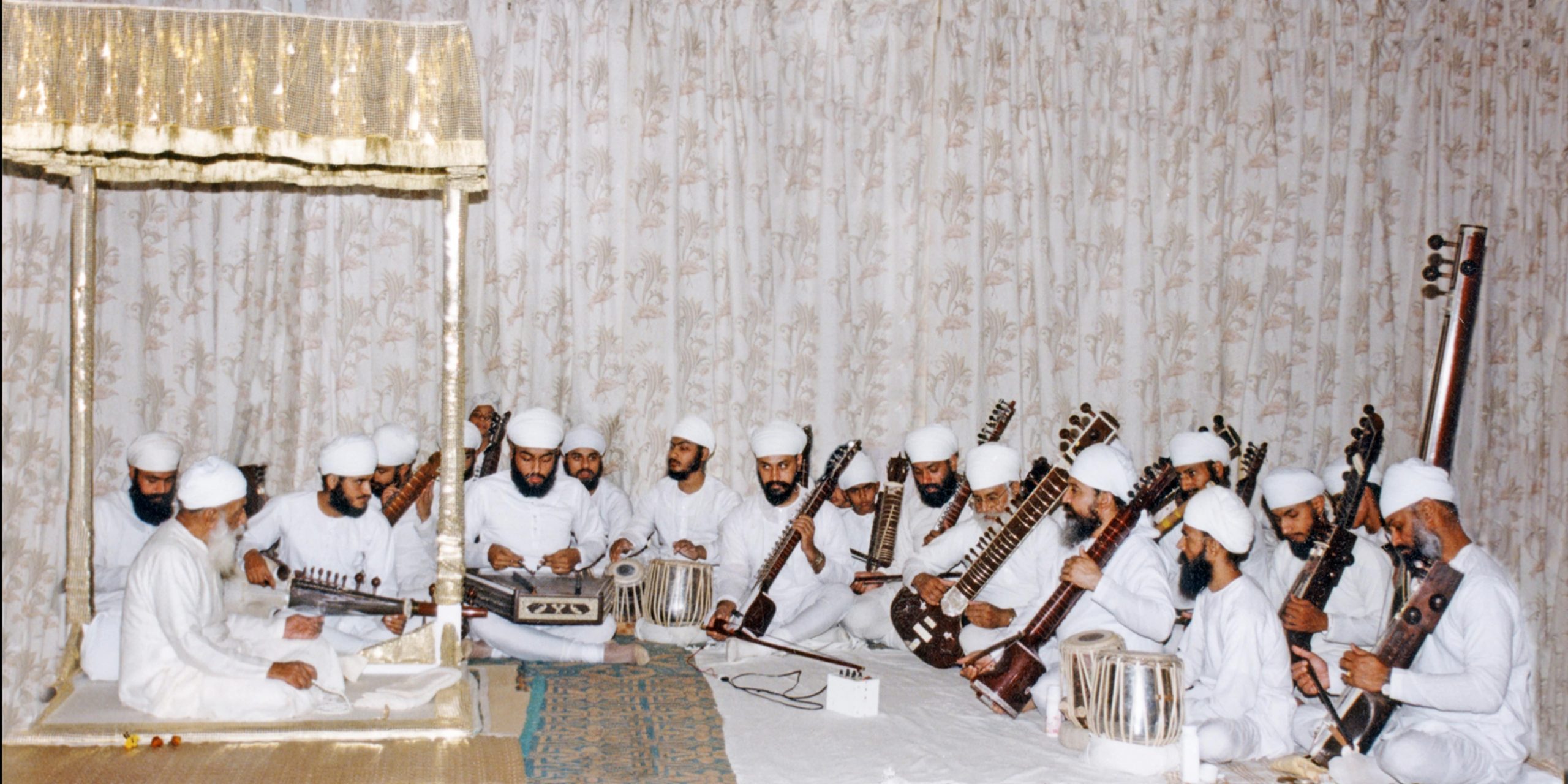
The Namdhari Kala Kendra – A school of Music was started in Sri Bhaini Sahib to teach the young minds. A typical day would begin as early as 2:00 am, when the children would be woken up. Music classes would start by 3:00am. The school would reverberate with the sound of children singing, learning the Tabla, Sitar, Santoor, Dilruba etc., Surprise checks by Satguru Ji Himself would keep the teachers and students on their toes all throughout. Daybreak would be formal school and the children would be back in the afternoon at the Kala Kendra. The evening music sittings in the presence of Satguru Ji would be sought after and no student would want to miss it ever, for it was in these sittings that the benevolence of Satguru Ji flowed as music bound Him and His students together as one.
Propagating the tenets of the Sikh Gurus, Sri Satguru Ji initiated the research of various lost Raagas as stated in the Aad Guru Granth Sahib. Ancient traditional compositions like the ‘Dhunis’ were revived and additional one‟s composed. Special attention was paid to the revival and restoration of ancient Indian classical instruments that were hitherto on their way to extinction and talented instrument makers were honored. Such was the fervor that whether it be day or night, whether He was in India or abroad, whenever Satguru Ji remembered a composition He would teach the student present immediately. In the words of Satguru Ji Himself – A teacher also learns when he teaches and I am thankful that I got an opportunity to learn like this as well.
In 1999 Sri Satguru Ji was awarded the ‘Ustad Hafiz Ali Khan Sangeet Munishi Award’ by the Sarod Gharana of Gwalior under the stewardship of the renowned Sarod maestro Ustad Amjad Ali Khan. The Sangeet Natak Academy of India conferred the prestigious fellowship of the Tagore Ratan to Satguru Ji in 2012.
The dawn of the new millennia saw the Namdhari community grow from strength to strength under the benevolence and guidance of Satguru Jagjit Singh Ji. With sheer will, hard work and single minded dedication Satguru Jagjit Singh Ji fulfilled the long cherished dream of Satguru Pratap Singh Ji as the fragrance of music started to emancipate from every Sikh‟s child. Eight decades of hard work had borne fruit and the results could be seen in every hymn sung and every classical performance given. Students had grown to be maestros, teaching more, spreading the music of the Sikh Gurus, a distinct style had evolved, slowly but surely a new Gharana (house) of music had taken roots as an ode to Satguru Ji‟s efforts – The Namdhari Gharana. It was indeed His ardent love and respect for music and musicians alike that Satguru Jagjit Singh Ji came to be known as the greatest patron of Indian Classical and Sikh Devotional Music in the post independence era of India, where music imbibed and united everyone, every moment was a flourish and every journey musical.
It was as if destiny beckoned and as silence and calm enveloped Sri Bhaini Sahib, on the 13 December, 2012, the journey that carried everyone together with sheer passion and motivation, the journey that set the benchmark for generations to follow, the musical journey of sheer excellence, love and devotion, reached its final destination as Sri Satguru Ji Jagjit Singh Ji united with eternal light.
Like the music that reverberates long after the symphony has played its last note the legacy of His Holiness Satguru Jagjit Singh Ji continues to inspire and motivate every musician, music lover and enthusiast. The Namdhari Gharana of music continues its quest to spread the vision of Satguru Ji under the benevolent guidance of their present Supreme Spiritual master Satguru Uday Singh Ji.
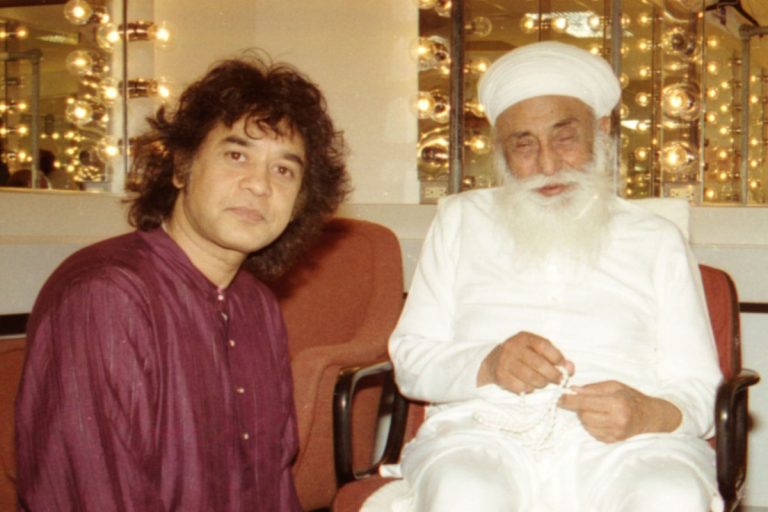
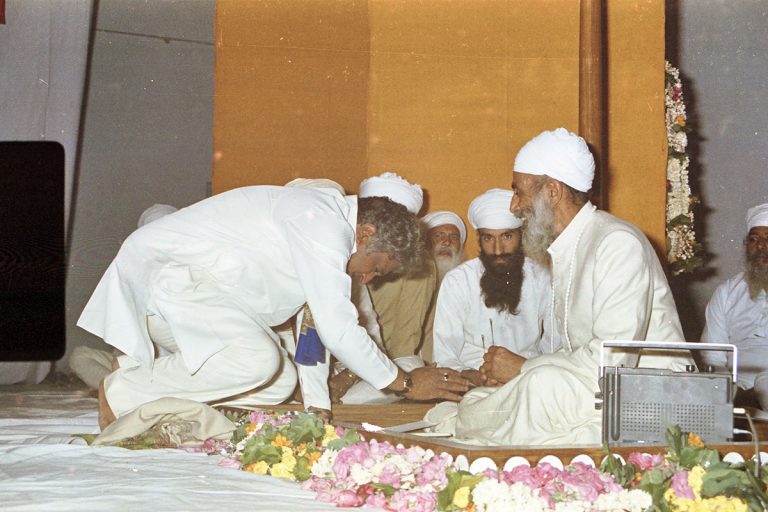
~Ustad Sultan Khan (Sarangi)
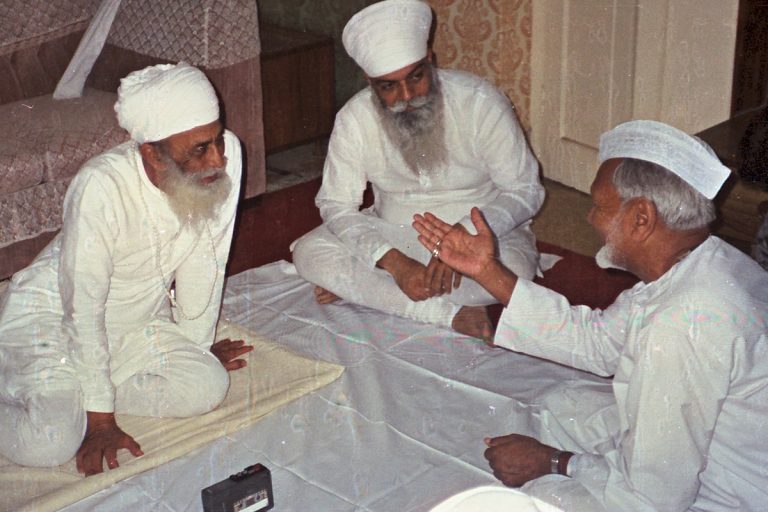
~Ustad Bismillah Khan (Shehnai)
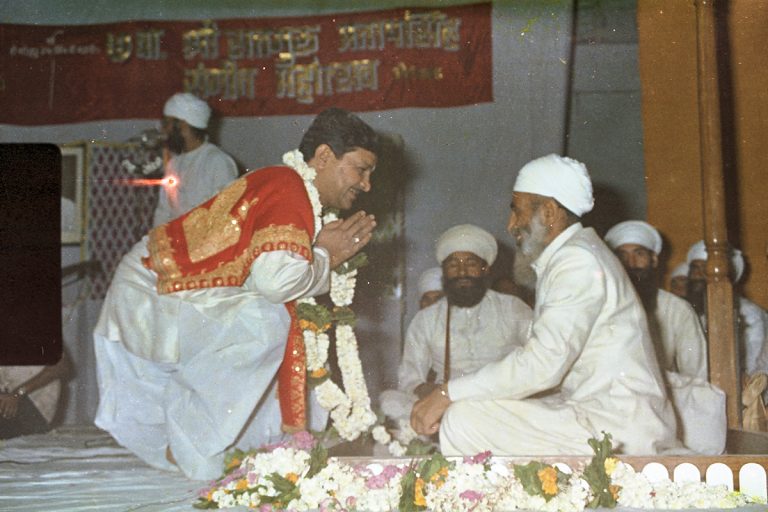
~Pt. Hari Parsad Chaurasia (Flute)
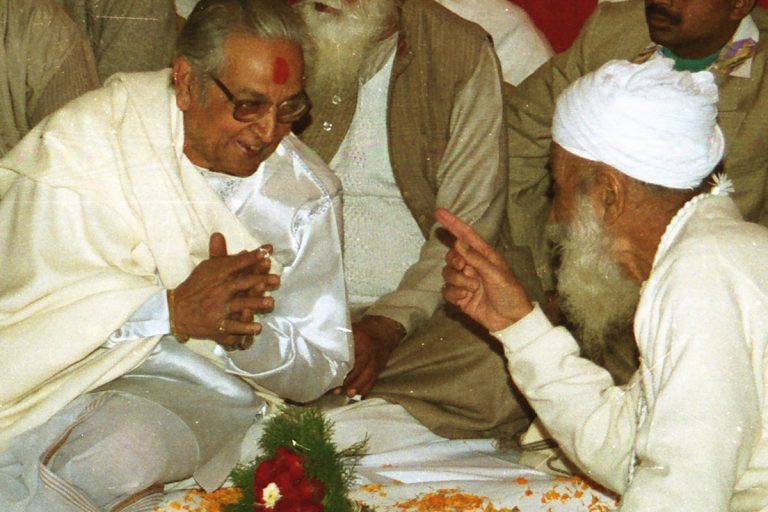
~Pt. Kishan Maharaj (Tabla)
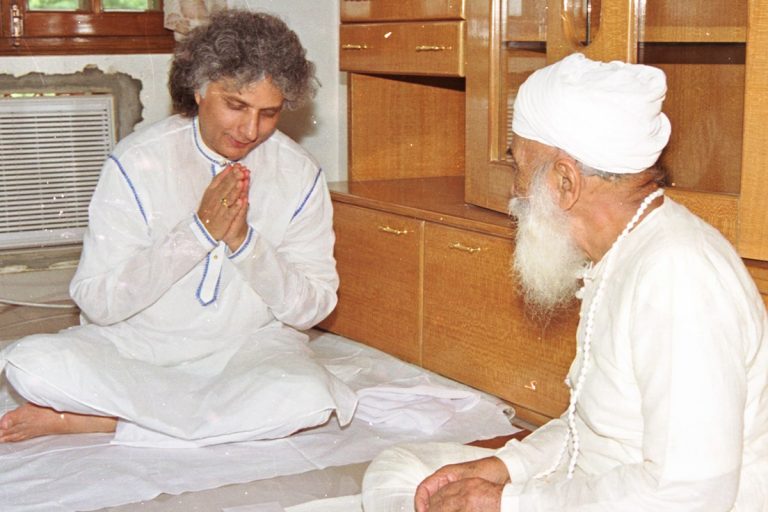
~Pt. Shiv Kumar Sharma (Santoor)
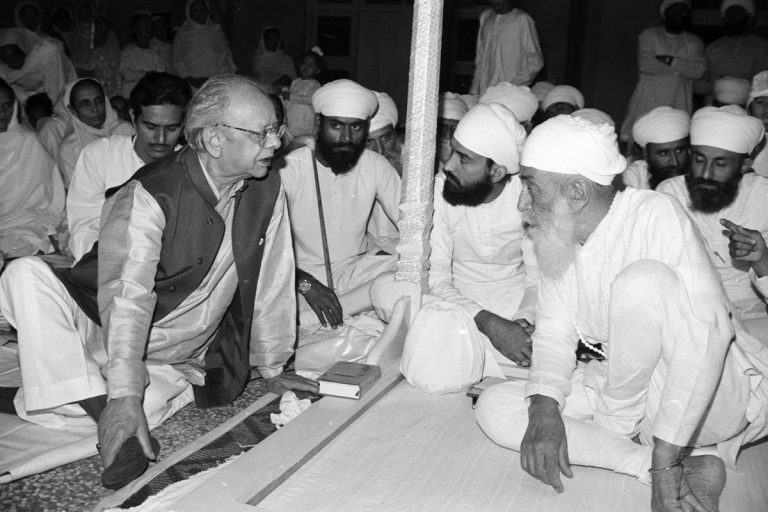
~Ustad Allah Rakha (Tabla)
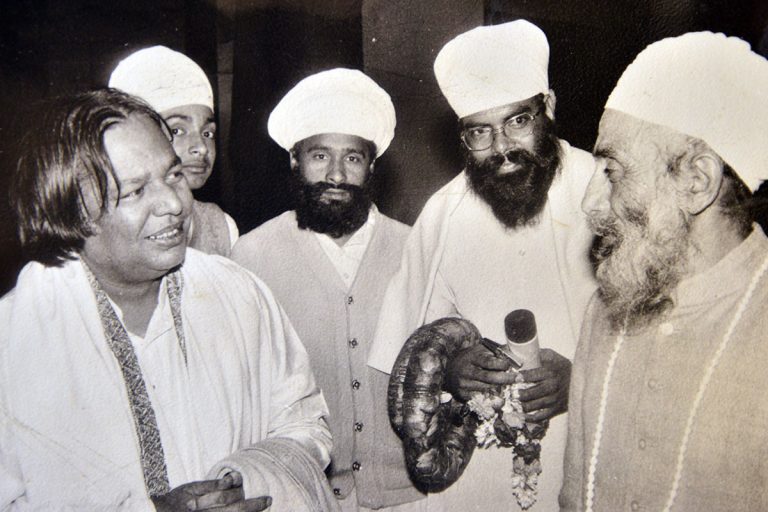
~Pt. Ram Narayan (Sarangi)
